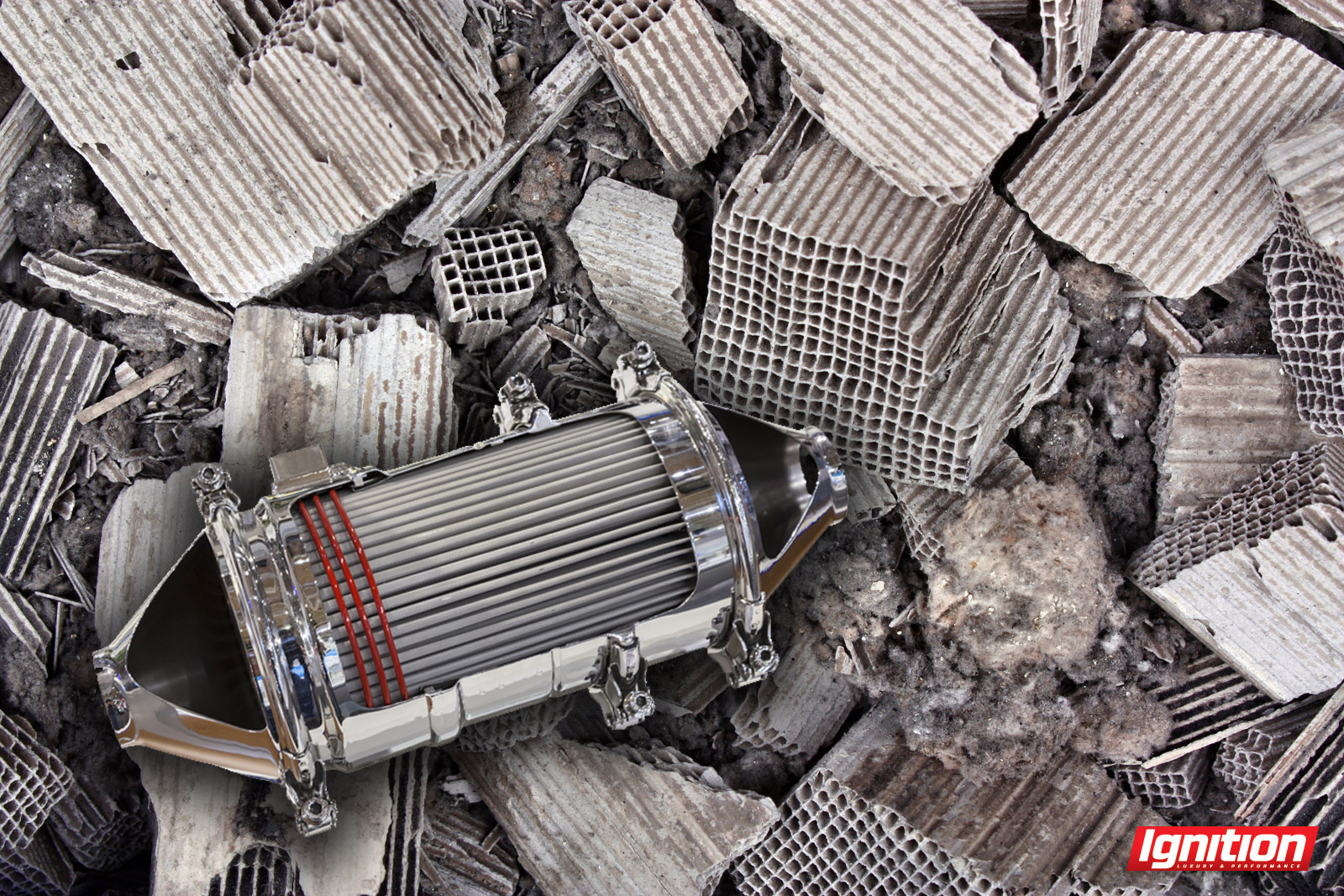
Cross section of a catalytic converter and particulate filter of a diesel engine. Elements such as gold, platinum, palladium and rhodium help transform harmful pollutants into carbon dioxide, water and nitrogen inside the catalytic converter.
The constant reminder of the environmental damage that we’re doing to our planet has me a little concerned. Let’s face it, we are a lucky bunch. Not only do we have the privilege of having motorized vehicles to drive around in, we have also been blessed with the ability to modify and play with these cars. It makes one think then – ‘If we have all of these luxuries, shouldn’t we at least spend a few extra dollars to ensure our hobby (a hobby that very few in the world are able to pursue) isn’t doing unnecessary damage the planet?’
The common argument is that motorsport adds a tiny speck of pollution in an already dirty world, the amount of carbon emitted from cat-less racecars isn’t even worth considering on a global scale. But that attitude and outlook is not so dissimilar to saying “My vote doesn’t count!” – and we all know how important it was to go out and vote in our last Canadian Federal Election. Every little bit counts, and when it comes to removing the catalytic converter from a car, the difference in pollution is significant. There are some arguments as to why a catalytic converter shouldn’t be installed in a racecar – for one, a failed cat can cause engine damage by creating excessive exhaust back-pressure. Secondly, a catalytic converter can get very hot, potentially causing a fire if the car goes off-track on a hot, dry summer day. Rotary engines create so much exhaust heat that a cat would stand almost no chance at surviving – even special steel-packed mufflers have a hard time putting up with a rotary’s fire-breathing exhaust.
The worst are surely street cars that remove cats in search of five or 10 more horsepower, a difference that can barely even be perceived in a 300-horsepower vehicle. And these street cars bug me the most – as they spend 99.9-percent of their time driving around at partial throttle with a stoichiometric air fuel ratio – the perfect environment for a catalytic converter to reduce tailpipe emissions.
This is madness, and it needs to end. In Europe almost all sanctioned racing series’ mandate the use of a performance or racing catalytic converter, and we don’t hear of cats lighting fields on fire. Last I checked WEC cars weren’t having troubles finishing races due to clogged cats blowing up engines. Modified road cars use performance and racing catalytic converters from suppliers like Vibrant and HJS and yield the best of both worlds – a significant reduction in tailpipe emissions and a high-flow catalyzer that has almost no power loss compared to an open exhaust. There is no excuse not to use a cat (maybe if it’s a rotary).
For a street driven car especially, the hydrocarbon emissions of a vehicle without a catalytic converter are somewhere in the area of six to 10 times greater than a vehicle without a catalytic converter. So if you’ve removed the cat in your road car, not only is it now entirely illegal, you are also now pumping out nearly 10 times the hydrocarbon emissions you used to. Shame.
While a cat is not a magic device that makes a car totally clean there are still the same CO2 emissions with a cat versus without it is a step in the right direction to being somewhat responsible for our planet while we enjoy our dirty hobbies.
Maybe in 30 years we will all be driving electric sports cars and charging them with clean energy. I sure hope so for my children’s sake.

























